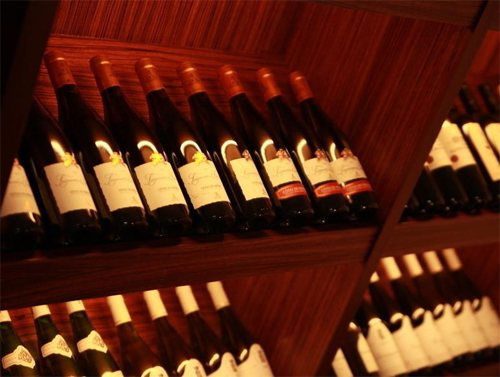A billion Chinese each drank 1.4 liters of wine in 2011, or at least that’s how the average plays out. On the surface 1.4 liters doesn’t seem of much consequence — outpaced by America’s 11.2 liters of wine per capita or swallowed by France’s 53.2 liters per capita.

But China’s wine market is on fire as consistent consumption increases have paralleled surging import numbers over the last five years. By 2015, if China’s wine consumption climbs toward a projected 2 liters per capita, as predicted by International Wine & Spirit Research, demand for foreign imports will grow in tandem. With a population of 1.3 billion, even small increases in per capita wine consumption can bring exponential changes in demand. “China, China, China” has become the mantra of wine marketing hopefuls across the West, and China’s import market, although past the “first-in-the-door” stage, still has a Wild West flavor, with foreign imports jockeying for position.
U.S. wine exports, 90 percent of which come from California, hit a record of $1.4 billion in 2012, according the Wine Institute. China was a $74 million market for California wine in 2012, up 18 percent from 2011. A battle for market access is brewing — cheap bulk vs. higher priced fine wines.
Mark Bright, a San Francisco-based winemaker, told the Wall Street Journal that California’s wine reputation is at risk and places the blame on “vendors who have flooded China with cheap plunk wine” that is sold at inflated prices.
Want access to the very latest in agriculture news each day? Sign up for the Western Farm Press Daily e-mail newsletter.
Robert Dahl, chief executive of California Shiners, echoes that scenario. “We’ve had people just show up with bags of cash and say give me the cheapest wine,” he told the Journal. “People were just sending junk. We’ve been pushing 100 percent against that. It makes us all look bad.”
The California wine industry, in addition to the image controversy, is up against a flood of fakes. Wine counterfeits abound across the globe, with prime U.S. examples featuring the Koch-Greenburg civil suit and Rudy Kurniawan’s pending criminal trial. (See Biggest wine hoax in history reveals trade secrets) But China is the arena of choice for knock-off pirates. China’s reputation as the ur-source of all things counterfeit is not without cause — and wine is no different. The practice of filling old bottles with low quality wine has created a cottage industry of bottle scavengers. The L.A. Times reported in 2012 that Christie’s concludes its tasting events by breaking the bottles with a hammer — no black market leaks. In addition, consumer confidence has been shaken by openly sold knock-off brands with labels that are barely distinguishable from the original brands.
The heights of market opportunity are always tethered to risk, and despite problems, the Chinese market is growing more lucrative each year and U.S. exporters are counting on China to continue reaching for the wine bottle — California style.





